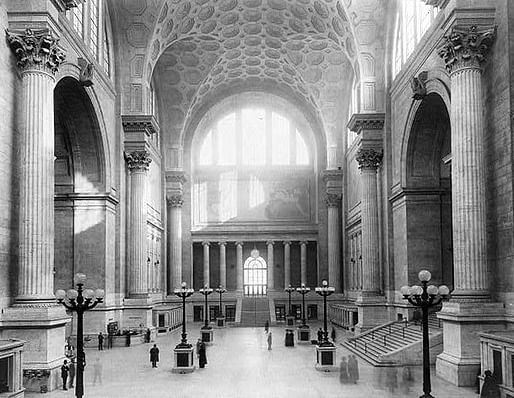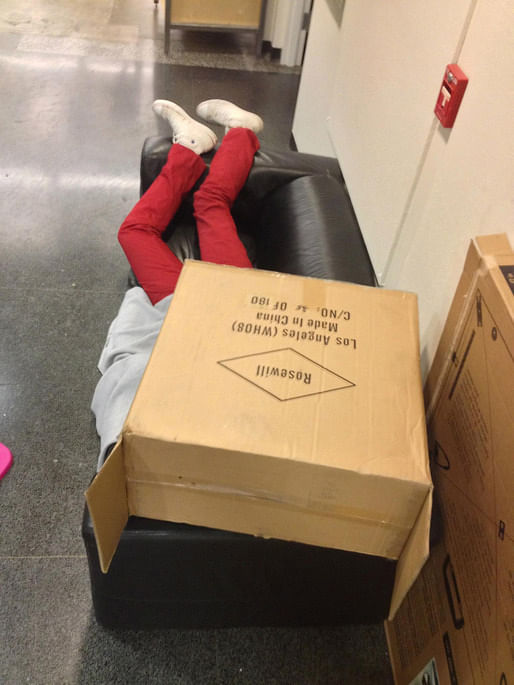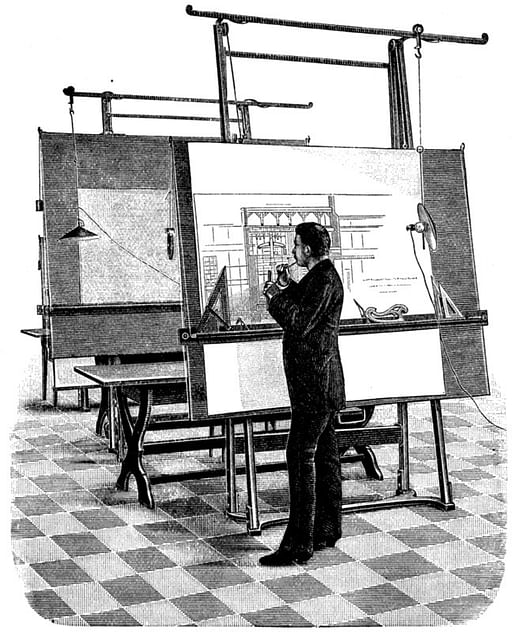

May 2015

↑ The new $2.5 billion plan to rebuild the historic Penn Station
A proposal by Richard W. Cameron – principle designer at Atelier & Co. – to rebuild the historic Penn Station spurred a lively conversation on Archinect. The famed-Beaux Arts building was demolished over 50 years ago, but the fight to preserve the structure is often credited with spawning the modern preservationist movement.

↑ When the pressure is on, dedicated architecture students show how to power nap like a pro
Architecture school is famed for denying its students sleep – although one could argue the culture surrounding this is unnecessary, unproductive, and likely dangerous. A tumblr was started to collect students dozing at their drafting tables, and this posting highlights some of the best snapshots.

↑ NCARB will resolve "Intern Architect" title debate at AIA National Convention
“Intern architect,” a title traditionally attached to an architect working towards licensure, but not yet licensed, came under scrutiny because of its relationship to the fraught relationship of “interns” in today’s professional culture, including architecture. The NCARB held a debate over the title at a conference in Atlanta, and later in the month it was determined that it would be officially phased out.
↑ Bjarke Ingels wants to "make the world of the future more like our dreams”
Julia Ingalls reviewed Bjarke Ingell’s talk for the Wired Business Conference, describing his presentation as “striking a balance between Steve Jobs’ product-launching gravitas and the bounding playfulness of a TED-talker.” As is quickly becoming de rigueur with anything Bjarne-related, a robust conversation ensued in the comments section.

↑ Welcome to the jungle: Sou Fujimoto lectures on applying natural infrastructure to urban design
Julia Ingalls reviews a talk by Suo Fujimoto at UCLA. The architect revisited many of his most iconic works, focusing on “transparency.” Ingalls notes, “Here is an architecture that seems to embody the 21st notion of privacy and connectivity, which is to say: virtually none, all of the time.”
↑ Police Shut Down Mosque Installation at Venice Biennale
Police in Venice shut down the Swiss artist Christoph Büchel’s installation at the Venice Biennale. There are no mosques in Venice, so the artist transformed an abandoned Catholic church into a functioning mosque. But the popular installation was shut down out of security concerns and for lack of proper permitting.

↑ Beatriz Colomina and Mark Wigley will curate 3rd Istanbul Design Biennial
The 3rd Istanbul Design Biennial, which will take place next year, will be curated by the theorists Beatriz Colomina and Mark Wigley. The progressive architectural thinkers announced the biennial’s theme later in the year: a critical look at the relationship between design and the human through an expanded temporal framework.

↑ Calatrava: "I have been treated like a dogs”
The Spanish architect Santiago Calatrava has drawn a fair amount of criticism for problems with his WTC transportation hub, including project delays and costs. In an interview for the Wall Street Journal, he claims he has been treated “like a dog” in New York City. Comments ensued.

May 2015

↑ Architecture of the Anthropocene: Getting Lost in the Ozone
The third, and so far final, installment in the Architecture of the Anthropocene series takes a meandering and person look at the enmeshment of architecture within ecology. Looking at the ways we perceive ecology, from climate modeling to the famous “blue marble” image, the article considers a context in which “the map is not only an inadequate representation of the territory, but it also touches the territory and transforms it.”
↑ Stop the presses: Paul Goldberger's take on critical relevance in the social media age
In this interview, Julia Ingalls talks with the famous architecture critic Paul Goldberger about the relevance of his line of work in the age of social media. “The role of the critic is not to bang a gavel and say, ‘This building is guilty or innocent.’ It’s more about being a provocateur,” Goldberger states.

↑ Art + Architecture: Andreas Angelidakis between the monumental and the particular
I talk with the Greek architect-cum-artist Andreas Angelidakis about the way he mediates disciplinary boundaries, “fin de siècle obsessions,” and the internet, among many other things. “We live in a time where our ideas and feelings towards objects are often more important than the object itself,” Angelidakis states.
No Comments
Block this user
Are you sure you want to block this user and hide all related comments throughout the site?
Archinect
This is your first comment on Archinect. Your comment will be visible once approved.